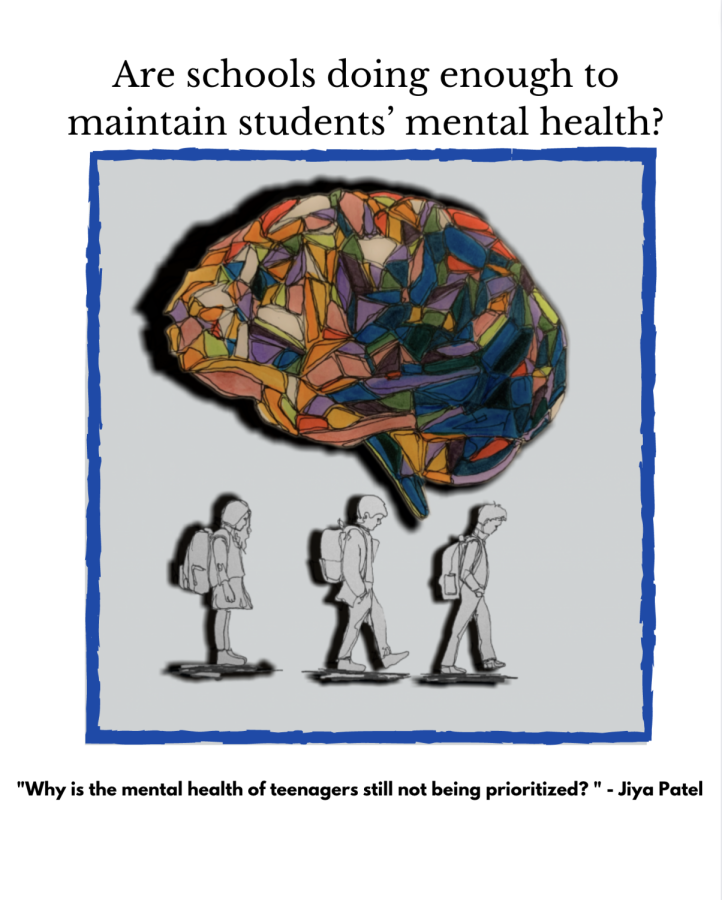Opinion: Schools Need to Prioritize Students’ Mental Heallth
Many see high school as the prime time of one’s life. The adolescent period tends to be viewed through rose-colored lenses. High school is glamorized as the most important and enjoyable phase of an individual’s educational career. It is associated with the opportunity to rebrand yourself and to challenge yourself- emotionally, socially, and educationally. However, in addition to all the good things that come with transitioning from childhood to adulthood, many depictions of high school tend to ignore the uphill mental battle many of these teens are forced to fight. Depression, anxiety, and suicide are far too common among these age groups and obtain little to no recognition. Top of Form
According to discoverymood.com, every 100 minutes a teen takes their own life. Suicide is the third leading cause of death for the age groups 15-24, and about 20% of all teens experience depression before adulthood. So, the question remains. Even with these disturbing statistics which don’t even began to cover the intensity of depression among adolescents, why is the mental health of teenagers still not being prioritized?
“By many markers, kids are doing fantastic and thriving,” Candice Odgers, a psychologist at the University of California, told the New York Times. “But there are these really important trends in anxiety, depression and suicide that stop us in our tracks. We need to figure it out,” Odgers said. “Because it’s life or death for these kids.”
While society has made strides in recognizing and validating mental health, many families of those who struggle with it view what could be depression or anxiety as the moodiness that comes with puberty. As something that has just recently been viewed as justified in humanity, many individuals haven’t made the transition of treating this mental instability with sensitivity and caution. This is where schools come in and could possibly act as the lifeline of someone struggling mentally.
Dr. Linda Mendez, a professor of school psychology at Fairleigh Dickinson University, says, “Anxiety can present in a number of different ways,” she said. “Sometimes you might not be able to see it at all because kids can hide it pretty well. Teachers should watch for unusual behavior, such as frequent absences or trips to the nurse’s office, which could be symptoms of anxiety or other mental health issues.”
In addition to properly training adult figures in these teens’ lives to learn how to properly identify and notice a shift in their mental health, many schools have initiated a “Wellness Wednesday” program in which students spend the period studying the skills of mindfulness and inner peace through outlets such as journaling and group discussions. In the post-pandemic era, it is especially important that schools make an effort in recognizing and treating the mental health of their students.
“If it wasn’t evident before, it’s screaming in our face now,” Tahirah Crawford, director of college placement at People’s Prep Charter School said to chalkbeat.com, “students are struggling with a whole lot of things.”
So, are schools doing enough to maintain students’ mental health? The answer is one with many layers. In comparison to recent decades where the norm was to suppress any negative emotions one was feeling, yes, schools are making great improvements. However, are they doing everything they possibly can? Are they actively working to prioritize mental health in a place many people associate with deadlines and pressure? The answer to that is simply no, they are not. Mental health is very real and the fact that it is still not widely recognized is a disservice to millions of individuals across the globe.
However, it is a fight that we can keep on fighting. We can hope and work to progress to a society where mental health is not only recognized but appreciated.
As Matt Haig once said, “Mental health problems don’t define who you are. They are something you experience. You walk in the rain, and you feel the rain, but, importantly, YOU ARE NOT THE RAIN.”













